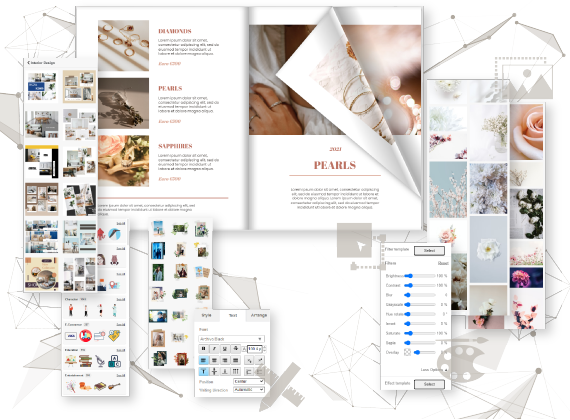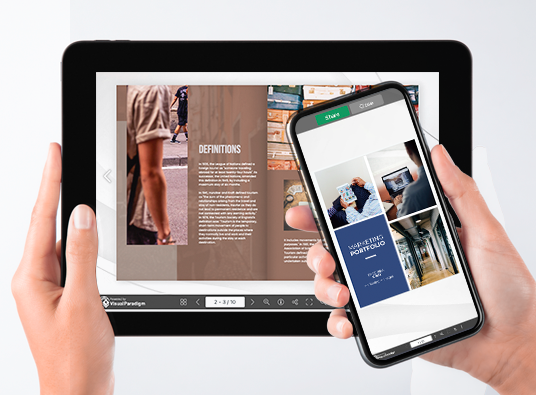A Comprehensive Guide to Designing and Promoting Your Personal and Business Flipbooks
Introduction:
In today’s competitive job market and rapidly evolving business landscape, having an impressive portfolio is essential to stand out and attract potential employers or clients. Gone are the days when a simple PDF or static website would suffice. To truly captivate your audience and showcase your skills, experiences, and achievements, you need a more interactive and engaging format. Enter the world of flipbooks, a powerful tool that transforms your portfolio into a compelling, dynamic experience. In this article, we’ll explore why flipbooks are an ideal choice for promoting yourself and your business, and how Fliplify can help you create an unforgettable digital portfolio.
Why Choose Flipbooks for Your Portfolio?
- Attention-Grabbing Interactivity:
Flipbooks offer an interactive and engaging experience that sets them apart from traditional PDFs or static websites. With flipbook-style navigation, multimedia integration, and clickable elements, your audience is more likely to spend time exploring your portfolio, taking in your work and accomplishments.
- Personalization and Branding:
Flipbooks allow you to customize your portfolio to reflect your unique style and brand identity. From choosing layouts and backgrounds to incorporating your color scheme and logo, Fliplify gives you the power to create a one-of-a-kind portfolio that truly represents you.
- Shareability and Accessibility:
Flipbooks are easy to share across various platforms, including social media, email, and your website. Fliplify provides you with a shareable link that can be distributed widely, increasing your visibility and attracting more potential clients or employers. Additionally, flipbooks are designed to be mobile-friendly, ensuring that your portfolio looks great on smartphones and tablets, making it accessible to a wider audience.
Designing a Flipbook Portfolio with Fliplify:
- Plan Your Content:
Before diving into the design process, take the time to plan your portfolio content. Determine the order in which you want to present your work, and consider which projects or accomplishments are most relevant to your current goals. Organizing your content in advance will help you create a logical and cohesive flow throughout your flipbook.

- Choose a Template:
Fliplify offers a variety of customizable templates to suit your unique style and preferences. Browse through the available options and select a template that provides a strong foundation for your content. Remember, you can always modify the template to better reflect your branding and design vision.

- Customize Your Flipbook:
With Fliplify, you have full control over the design and layout of your flipbook. Customize the background, layout, and color scheme to match your brand identity. Add your logo, images, and multimedia elements to create a visually appealing and engaging experience for your audience.

- Optimize for Mobile Devices:
As mentioned earlier, mobile-friendliness is crucial for your portfolio’s accessibility. Ensure that your flipbook is optimized for viewing on smartphones and tablets. Test your flipbook on various devices to confirm that the layout and multimedia elements display correctly and function as intended.

- Proofread and Publish:
Before sharing your flipbook, proofread your content thoroughly to ensure that there are no grammatical errors or inconsistencies. Make any necessary revisions to create a polished, professional, and error-free portfolio. Once you’re satisfied with your flipbook, publish it and share the link with your desired audience.

Tips and Tricks for Creating a Memorable Flipbook Portfolio:
- Limit Your Content:
While you want to showcase your best work, avoid overwhelming your audience with too much information. Be selective and focus on the most relevant projects or achievements that demonstrate your skills and expertise.
- Incorporate Multimedia Elements:
Add videos, animations, or audio clips to bring your content to life and engage your audience. Just ensure that these elements are relevant and enhance the overall experience.
- Add Interactive Elements:
Incorporate clickable links, buttons, or slides to create an interactive experience for your audience. This will encourage them to explore your portfolio further and spend more time engaging with your content.
- Keep It Simple:
While flipbooks offer many customization options, it’s essential to maintain a clean and minimalistic design. Avoid clutter and stick to a simple layout that allows your content to shine.
- Test on Multiple Devices:
As mentioned earlier, mobile-friendliness is crucial for your portfolio’s accessibility. Test your flipbook on various devices to ensure that it displays and functions correctly across different screen sizes and resolutions. Here are some flipbook templates for your reference:
Conclusion:
A flipbook portfolio created with Fliplify is an excellent way to showcase your skills and accomplishments in a visually engaging and interactive format. By following the tips and tricks outlined in this article, you can create a memorable digital portfolio that sets you apart from the competition and helps you attract the right opportunities in your personal and professional life. So, why wait? Get started today and take your portfolio to new heights!


